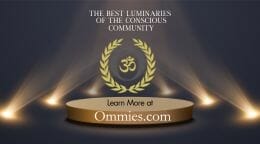Sustainability, Deep Ecology, & the Sacred

Perhaps the key to true sustainability of ourselves and our planet is the perspective of “deep ecology” and an understanding of the sacred in ourselves.
Connecting Sustainability, Deep Ecology, & an Awareness of the Sacred
by Llewellyn Vaughan-Lee
As our world stumbles to the brink of ecological collapse, the “tipping point” of irreversible climate change, sustainability has become a vital issue. But in order to consider the question of sustainability, it is important, to begin with the question: who or what is being sustained? Does sustainability refer to “sustained economic growth,” and an environment that is able to sustain our present human civilization with its energy-intensive, consumer-driven needs and image of material progress? Or does sustainability refer to the whole ecosystem, an interconnected web of life with its vast and rich diversity of species? Which world are we trying to sustain?
The first image of sustainability has economic models of growth and energy efficiency, often with accompanying “green” ideas such as green technologies or green energy to help our civilization develop. It is orientated almost solely towards our human wellbeing, which the environment is seen as supporting. This is sometimes referred to as “surface ecology.”
The second image of sustainability is often referred to as “deep ecology,” and it considers the ecosystem as a living whole of which humanity is only one part. In this complex web of interrelationships, all species are dependent upon each other, and it is this dynamic pattern of inter-relationship that needs to be sustained. No one part can be considered as separate from the whole, and the idea that the environment is just here to support our human civilization is a travesty of real environmental consciousness.
Deep ecology moves beyond the Newtonian idea of humanity being separate from the world in which we live—the image of humanity and its “environment.” It does not see humanity as a “superior” species, which the rest of the ecosystem should support in a subservient manner, or that nature is for humanity to master and control. Rather than embracing a Darwinian concept of the survival of the fittest, deep ecology sees life from the perspective of co-operation and inter-dependence. It brings into question whether our present civilization, with its model of continued economic and material growth, is ethically or environmentally sustainable. Is it right that our human needs and desires take precedence over the whole of creation, to the point of unprecedented species depletion, pollution, and destruction of natural habitat—as well as constellating a climate change that is bringing our whole ecosystem into a dangerous state of imbalance? And if creation is an interdependent whole, how long can we all endure this present ecocide?
An interdependent ecosystem is closer to the dynamics of particle physics, which we begin to understand as underlying our physical world. Here not only is no one part separate from another, but everything is interacting, both locally and at a distance. And consciousness itself is not separate from physical reality. We are interdependent in ways we are only just beginning to understand. And yet we still live in a civilization dominated by an outdated Newtonian image of separation. Sadly, even much present “environmental consciousness” remains within this paradigm, seeing the ecological imbalance as a problem that we can solve scientifically or economically. We have only begun to recognize the degree to which this unprecedented global crisis requires a shift in consciousness. If we are to truly respond to the need of an interconnected whole, we need a quality of consciousness that embraces the whole.
Once we step into the reality of a holistic consciousness that is truly in “interrelationship” with the whole, we will find our self in a very different world in which everything is interacting with us in a continually dynamic state. Even our consciousness is affecting the physical world. The question then becomes, what is our role in this truly interdependent reality? Even our present image of “deep ecology” primarily sees the world through a consciousness of separation—the analytic and rational framework of our education and conditioning. We rarely experience our consciousness merged into the oneness of the world around us, as for example exists with indigenous peoples for whom even the idea of an individual being separate from their environment does not exist.
Sadly, separation is so embedded into our present Western consciousness that we are not even aware of the limitations of our perception, or how our problem-solving mentality has a determining effect on how we see and interact with our environment. We have been educated to see the parts rather than the whole and to think and act from an attitude of separation. If we are to truly embrace the reality of ecological sustainability that recognizes the world as a living whole, we need to make the shift into a holistic consciousness, a consciousness that sees the whole in every part. Only then can we fully respond to the environmental crisis that is being caused by our present Western consciousness and the values it supports. Deep ecology requires not just a shift in values or ideology but a shift in consciousness.
We cannot return to an indigenous consciousness, and we need the tools of science and technology to survive in today’s world. However, within indigenous awareness, there is a key that can awaken us to an awareness of oneness. This key is the recognition of the sacred nature of creation. For indigenous peoples, everything is sacred, and they live this primal knowing in all of their daily activities. All of the world is sacred, and all of their everyday activities a lived relationship to the sacred. This is the heartbeat of their world. It could be argued that our Western civilization is unusual in not having an awareness of the sacred at its foundation. In our image of “progress,” we are unaware of having lost something so essential to life.
The “sacred” is not something primarily religious or even spiritual. It is not a quality we need to learn or to develop. It belongs to the primary nature of all that is. When our ancestors knew that everything, they could see was sacred, this was not something taught but instinctively known. It was as natural as sunlight, as necessary as breathing. We all have within us a sense of the sacred, a sense of reverence. However, we may articulate it. It is a part of our human DNA. We each need to find this key within us. What does it mean for something to be sacred, what feeling does this evoke? How do we recognize the quality of the sacred, and how do we then respond?
If we sense that our world is not just a physical, mechanistic, or chance driven reality, but that there is a deeper mystery within and around it, we are sensing the sacred nature of creation. However, we may call this mystery, it permeates all of creation. It may be more easily felt in certain places, in ancient groves, beneath star-filled skies, in temples or cathedrals, in the chords of music. But this is a mystery that belongs to all that exists—there is nothing that is separate from it. As such, it celebrates the unity that is within and around us, the oneness of which we are a part. Our sense of the sacred is a recognition that we are a part of this deeper-all embracing mystery.
Once we allow our consciousness to be present in this greater mystery, we will find that life will speak to us as it spoke to our ancestors. It will remind us of how-to live-in harmony with creation and how to restore the balance that is intrinsic to life. This is the ancient wisdom of the Earth itself, the Earth which has evolved and changed over millennia, been through previous ecological shifts. Unless we return to this deep knowing, real sustainability will remain a concept rather than a lived reality. Thomas Berry speaks to this:
We need not a human answer to an earth problem, but an earth answer to an earth problem. The earth will solve its problems, and possibly our own if we will let the earth function in its own ways. We need only listen to what the earth is telling us.
We still carry this primal knowing of the sacred within our consciousness, even if we have forgotten it. A relationship to the sacred is older than any formalized religion, even though it is found at the foundation of many religions. It is a primal recognition of the wonder, beauty, and divine nature of the world. It is a felt reverence, an inner sense—we even speak of “a sense of the sacred.” Once we bring this foundational awareness into our consciousness, into our relationship with the world in which we are present, we will find that it opens a door in our consciousness into oneness. The sacred is a quality of spirit in which all is one. Once we recognize something as, sacred, we feel its unity—the whole of which it is a part—the sacred naturally draws us away from separation towards oneness. The remembrance of the sacred is a key that can awaken our consciousness to the oneness to which we belong.
The awareness of the sacred reconnects our consciousness to the primal structure of life, which was known to our ancestors. For them, the world was sacred and whole—they could not conceive of it being other. The greatest tragedy of modern man is that we have lost this primal awareness, this knowing of the sacred. The most needed work is to reconnect with the sacred in our outer and inner life. Through this simple act of, remembrance, we can regain the balance we have so dangerously lost. Then we can see how we are a part of the interconnected web of life and know the work that needs to be done. Our outer actions, rather than reconstellating the patterns of separation, will naturally come from oneness and help life’s unity to unfold. We will again be a part of the evolving organic interdependence of life. Without this simple key of awareness of the sacred, we could remain lost in the wasteland world we are creating.
If we remember the sacred, we will find our self in a world as a whole as it is holy. This is not a world that sustains our models of economic growth and consumer desires. This is rather a world of wonder and magic, and a world that needs our attention—that needs to be sustained as much as it sustains us, sustains our souls as well as our bodies. But first, we need to make this shift in consciousness, to see the earth with new eyes. To quote the Canadian environmentalist David Suzuki:
The way we see the world shapes the way we treat it. If a mountain is a deity, not a pile of ore; if a river is one of the veins of the land, not potential irrigation water; if a forest is a sacred grove, not timber; if other species are biological kin, not resources; or if the planet is our mother, not an opportunity—then we will treat each other with greater respect. Thus is the challenge to look at the world from a different perspective.
You will also enjoy Llewellyn Vaughan-Lee: The Ancient Path of The Mystic
About the Author
Llewellyn Vaughan-Lee (born 1953, London) is a Sufi mystic and lineage successor in the Naqshbandiyya-Mujaddidiyya Sufi Order. He is an extensive lecturer and author of several books about Sufism, mysticism, dreamwork, and spirituality. http://goldensufi.org
This article was originally published by Spiritual Ecology, an edited version was first published online at The Huffington Post.
OMTimes Magazine is one of the leading on-line content providers of positivity, wellness and personal empowerment. OMTimes Magazine - Co-Creating a More Conscious Reality






